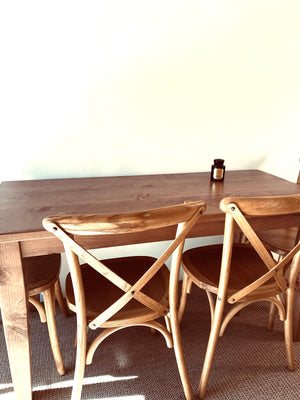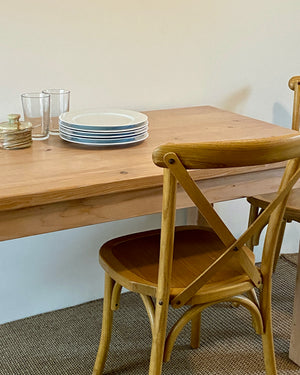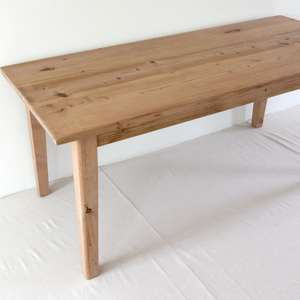
Shellac is an amber-colored resin, secreted by the lac bug, that is commonly used as a varnish to seal and protect wood furniture. It is a natural bio-adhesive polymer that is chemically similar to synthetic polymers and is, in essence, a natural plastic.
The female lac bug secretes this resin onto trees to make tunnels allowing for the bug to traverse between branches. When the bark of the tree is scraped for the shellac, it contains bark shavings which are placed on a canvas that is heated over a fire causing the substance to liquify and drip through the weave of the canvas. Once the shellac is dry and hardened, it is broken into flakes which are then crushed into a fine powder that is mixed with ethyl alcohol to make the shellac liquid and suitable for application.
Shellac was popularly used prior to the introduction of polyurethane, and has been widely used as a wood varnish for furniture pieces since 1550. It is excellent for insulation and a moisture protectant. The traditional “French Polish” method of finishing items such as violins, pianos and guitars revolves around the use of shellac for its many benefits including a rich visual depth.
Shellac is an excellent stain and odor blocker and acts as a “solves all problems” primer since it controls odors associated with fire damage. The shellac, itself, is ultra-violet resistant and will not darken through the ages although the wood that it is meant to seal may. It is, also, FDA approved and is safe for a variety of uses, ranging from: eating utensils to children’s toys.
Some good things to keep in mind when living with shellac on table tops, are that alcohol and perfumes will re-dissolve shellac and it will soften at 150 degrees so no hot pans should be placed directly on the surface. There may be more scratches with this finish, however it is easy to repair or fix any issues with shellac, when pertaining to furniture varnishing, because (unlike polyurethane) you can simply apply an additional coat of shellac since the new coat bonds flawlessly to the existing coats.
Shellac can be applied a variety of different ways, such as: brushing, spraying or padding and although it is a bit more labor intensive plus it may take a little practice to get the hang of it since it dries so quickly. Because of this, if you are using a brush, we suggest using a brush (like a Fitch brush or a shellac brush) that will hold a lot of finish.



